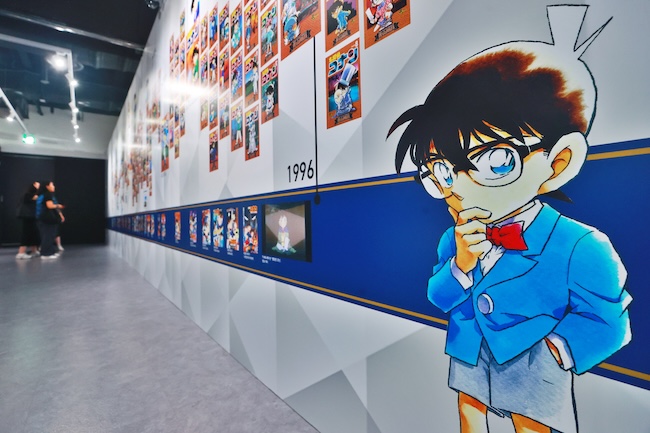SEOUL, Dec. 6 (Korea Bizwire) – With global markets increasingly focusing on South Korean webtoons, Japan’s traditional manga is experiencing a surprising surge in popularity within South Korea itself, marked by a wave of high-profile exhibitions and unprecedented author visits throughout the year.
The manga renaissance has been particularly evident in Seoul’s bustling exhibition scene. The year began with “Attack on Titan” continuing its run through March, followed by a succession of major shows including “Cardcaptor Sakura” (May-July), horror master Junji Ito’s experiential exhibition “Horror House” (June-November), and “Detective Conan” 30th anniversary original artwork showcase (July-September).
The “Big Three” manga series of the 2000s – “One Piece,” “Naruto,” and “Bleach” – have also made their presence felt in the Korean market.
“One Piece” celebrated its 25th anniversary of TV animation with an exhibition in June, while “Naruto,” which has sold over 250 million copies worldwide, opened its exhibition in September. “Bleach” is scheduled to follow with its own showcase in early 2025.
The exhibition calendar has expanded further with ongoing shows for “Berserk” and “Fullmetal Alchemist” opening in October and November, respectively. Even contemporary hits are joining the lineup, with the hugely popular “Jujutsu Kaisen,” first serialized in 2018, launching its exhibition at Yongsan I’Park Mall.
In a notable shift from previous years, Japanese manga artists have been making rare personal appearances in South Korea. Junji Ito’s first fan meeting and live drawing show in September, his first visit in a decade, exemplifies this trend.
Other prominent creators making their Korean debuts included Kaoru Mori of “A Bride’s Story,” along with visits from Ryoko Kui (“Delicious in Dungeon”), Tatsuya Endo (“Spy × Family”), Mika Yamamori, Tomoko Yamashita, and Yama Wayama.
The enthusiasm for these visits has been remarkable. Tickets for Junji Ito’s fan meeting sold out in just 17 seconds, while Yama Wayama’s new work “Let’s Go to the Family Restaurant” reached second place on Kyobo Bookstore’s bestseller list in the last week of March, boosted by news of the author’s visit.
Industry experts attribute this surge in popularity largely to the accessibility of Japanese animation through online streaming services, which has created a natural pathway to the original manga. The phenomenon crosses generational boundaries, with both younger and older audiences discovering or rediscovering series through digital platforms.
Recent hits like “Oshi no Ko” and “Demon Slayer” have gained particular traction among teenagers, earning the designation of “insider anime” after attracting celebrity attention.
“The audience demographics at manga exhibitions skew surprisingly young, with twenties and thirties forming the majority,” noted one exhibition planning company executive.
“The overall attitude toward Japanese manga has shifted, partly due to Netflix’s influence.”
The surge also aligns with support from the Japanese government. In June, Japan revised its Cool Japan strategy, setting an ambitious target to increase content exports, including manga and games, to 20 trillion yen by 2033 – more than four times the current level.
“The Japanese government has intensified its ‘Cool Japan’ strategy, providing strong governmental support for manga and animation content exports,” explained Lee Jae-min, director of the Comics Culture Research Institute at the Korea Cartoonist Association.
“This has likely contributed to the increase in Japanese animation exhibitions.”
Lina Jang (linajang@koreabizwire.com)








